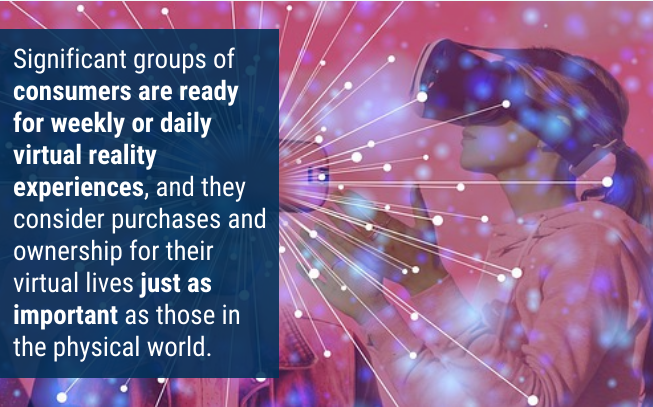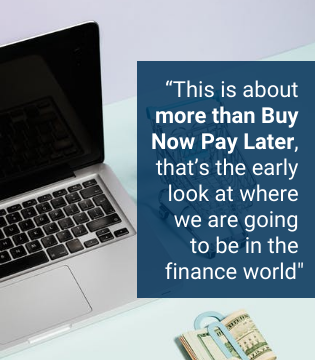Money: Where It’s Coming From and Where It’s Going
By Paul Timm, Vice President, Marketing & Strategic Development | NAFCU Services
New mechanisms for storing and transferring value are being introduced at a dizzying pace. An ever-widening array of options to earn and spend entirely in the digital world makes the cash-or-check world seem like a hazy memory. At our recent Strategic Growth Conference, Jana DeLancey, Mastercard’s Senior Vice President of Global Foresights, Insights and Analytics shared predictions and expectations about the effects of the new money and digital asset options. If you ever get a chance to read about Jana’s research, or better yet see her speak, you’ll see that she’s one of those people who can instantly make an entire room smarter. I’ve collected some of her ideas here, including advice for credit unions interested in adapting and growing.
Cryptocurrencies are not going away, but the adoption curve will twist.
Crypto creates options and competition not seen before on a global scale for transactions to be completed without traditional intermediaries such as banks or credit unions. Organizations and individuals alike will continue to find new ways to barter and pay with crypto. Jana expects that the unique proposition that crypto empowers consumers to feel like producers of the underlying currency will also continue to lift adoption. At the same time, she agrees that a reckoning day is coming for the high (and growing) power consumption some crypto requires. She says it’s estimated as exceeding the electricity needs of Argentina just to keep Bitcoin afloat. “Pretty soon the excitement of the younger generations will die down a little bit, and they’ll actually start hearing what people are saying about the energy conflict,” she said. “They might start making different choices, so that’s something we have to watch going forward.”
The metaverse will draw a great deal of spending from those accustomed to digital-first living.
 Jana pointed us to growing evidence that significant groups of consumers are ready for weekly or daily virtual reality experiences, and that they consider purchases and ownership for their virtual lives just as important as those in the physical world. The metaverse, the emerging set of experiences made possible by virtual and augmented reality, is serving up an increasingly diverse spread of goods, services, and digital title ownership available for purchase. These purchases and experiences aren’t just gimmicks anymore – from avatars and digital decorations, to major artwork, virtual real estate, and a multitude of services, people are spending lots or real money in the space. “That’s where customers are going to be, they’re going to be spending a lot of their hard-earned money there,” she said.
Jana pointed us to growing evidence that significant groups of consumers are ready for weekly or daily virtual reality experiences, and that they consider purchases and ownership for their virtual lives just as important as those in the physical world. The metaverse, the emerging set of experiences made possible by virtual and augmented reality, is serving up an increasingly diverse spread of goods, services, and digital title ownership available for purchase. These purchases and experiences aren’t just gimmicks anymore – from avatars and digital decorations, to major artwork, virtual real estate, and a multitude of services, people are spending lots or real money in the space. “That’s where customers are going to be, they’re going to be spending a lot of their hard-earned money there,” she said.
Digital assets create new service opportunities.
As the range of intangible assets accessible to everyday individuals grows, people will look for more help understanding their true financial picture. Being ready with services that both help assess the value and protect the security of their complex range of digital wallets, tokens, lockers, and metaverse objects could help credit unions participate in the digital world as a logical extension of existing relationships.
Get ready to return to the negotiating table for personalization data.
Speaking of intangible assets, Jana believes that there’s another shift coming in the ongoing push-pull regarding privacy and data collection. After years of shying away, she feels that consumers are coming back to the table. This time, however, they’re going to be more demanding about the value they receive in exchange for their data. It will take something really compelling and valuable, a new level of reward, and a relationship they can trust before consumer cough up their data. Jana’s big idea that I thought was spot on was “create a rewards pool that will be bigger than any one of you can do individually, but one that everybody then can access.”
Finance will increasingly be a just-in-time decision.
 “This is about more than Buy Now Pay Later, that’s the early look at where we are going to be in the finance world,” she said.
“This is about more than Buy Now Pay Later, that’s the early look at where we are going to be in the finance world,” she said.
Consumers are interested in learning more and being assisted in purchase and finance decisions, but Jana thinks that the old rhythms of awareness campaigns and mailed offers don’t resonate with younger consumers because it’s not the moment of need. Consumers expect us to know them, to know when they want to hear from us, and to demonstrate that in all our interactions. Increasing a consumer’s buying power at the right time and with a broader assessment of risk and creditworthiness could be just as important as the pricing terms. “Make it easier for me to really get the financing that I need, help me know how to spend my money, but make it in the moment,” she said.
As always, Jana brings lots of cutting-edge insights that make us think. If you missed part 1 of my recap of Jana’s presentation, please check it out to hear more on the hot topic of privacy, as well as the importance of principles and bringing everyday consumers into board-level discussions.
